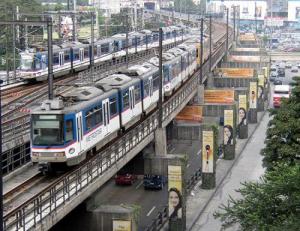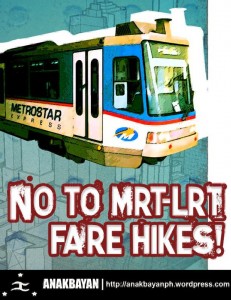The fare hike would mean waking up earlier for A Commuter's Life.
There are news now that there will be an increase in the MRT fare. That is bad news for those MRT passengers. On the other hand, it will be good news for bus operators. Moreover, that would also mean waking up or leaving house an hour earlier to give an allowance to traffic if the people could not afford the MRT fare anymore.
Tine mulls on the implications of the fare hike to regular wage earners.
Malaking bagay din kahit gawing 25pesos sya. Parang maliit pero malaki ang epekto nito sa budget nating lahat. Parang dodoble ang bayad sa MRT. At ang isang stored value card ko, apat na sakay na lang? Que horror!
Paano na ang mga minimum wage earner? Eh iyong mga mas mababa pa sa minimum wage ang natatanggap? Pag tinaasan nila, mag-bubus na lang ang mga tao at lalong magkakabuhol-buhol ang traffic. Mas lalong ma-lalate ang mga tao sa trabaho, sa eskwela…
What will happen to the minimum wage earner? How about those who earn less than the minimum wage? If they increase, people will just ride the bus and add to the winding traffic. People will become late more often for work, for school…
A Happy Munchkin!!! believes that the proposal is unreasonable and unfair.
where would the students get this additional expense? Of course, [from] their parents who basically gets more expenses including electricity, phone bills, water, food and even their own taxes. Second, million passengers ride LRT and MRT a day. If you were to ask me why I use LRT2 on my way to school? It is simply because riding a jeep instead of LRT is no longer applicable for me. I travel from Marikina to Pureza and I have a class at 7:30am, LRT would take me to school in 20mins whereas in the jeepney I would spend long hours of sitting and pollution intake (traffic is not yet included).
A student leader said that it is the government's responsibility to subsidize mass transit as a public service.
Ridon said that commuting expenses are included in the mounting cost of education in the country, aside from yearly tuition and other fee increases, expensive textbooks and board and lodging.
He also said that it is the government’s obligation to subsidize the LRT and the MRT, especially at a time when the country is facing continuing economic setbacks and costs of education that had more than doubled since the last decade.
A Radical's Nut points out that taxpayers are not only subsidizing actual transportations costs but also “guaranteed debt payments and profits of the transnational banks and big comprador firms that undertook the MRT project through Public-Private Partnership (PPP).”
Meanwhile, the spokesperson of a youth organization said that the government's justification for the increase is short-sighted.Taxpayers are subsidizing the debts incurred by the private consortium that built the MRT – the Metro Rail Transit Corp. (MRTC). Aside from guaranteeing debt payments, the national government also guaranteed a 15 percent return on investment per annum for MRTC under their 25-year build-lease-transfer (BLT) agreement in 1997 with the DOTC.
Thus the so-called “subsidies” go the Export-Import Bank of Japan, Sumitomo Bank, and other Japanese and Czech banks, as well as some local banks like the Bank of Philippine Islands (BPI). What made the deal more financially onerous is that the owners of these banks that provided a loan of US$462.5 million in 1998 and the private firms that constructed the MRT have the same owners.
“Mass transportation has benefits that outweigh the primitive economics being cited by the DOTC. Not only does reduce the costs of commuting for many Filipinos, it also helps in lessening the number of other vehicles being used. This leads to a reduction in traffic jams, air pollution along major roads, and the total amount of fuel being used”.
The youth leader cited a study by the U.S-based Brookings Institution said public vehicles used half of the fuel required by cars, SUVs, and light trucks. The same study said that for every mile travelled, private vehicles produce 95% more carbon monoxide and 50% more carbon dioxide than private vehicles.
In another study, this time in Japan, it was calculated that rail systems consumed an equivalent of 6 kilo watts per hour (kwh) for every 100 kilometers (km), while buses consumed 19 kwh per 100 km, and cars consumed 68 kwh per 100 km.









2 comments